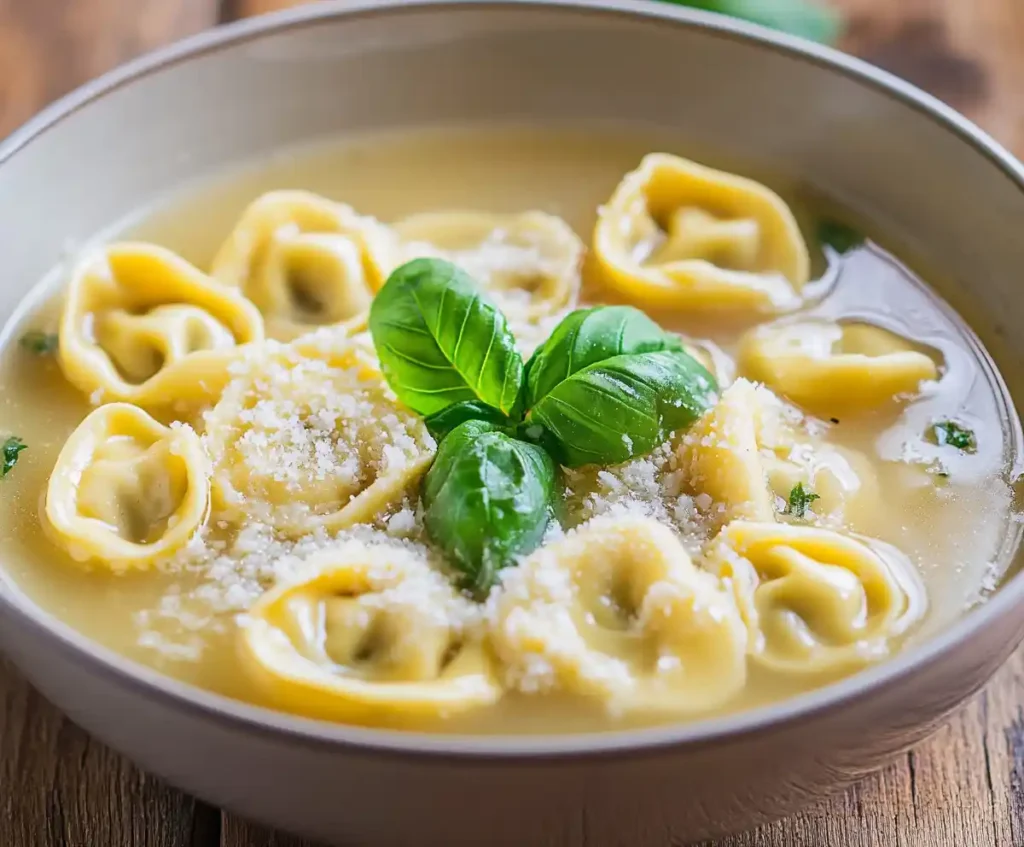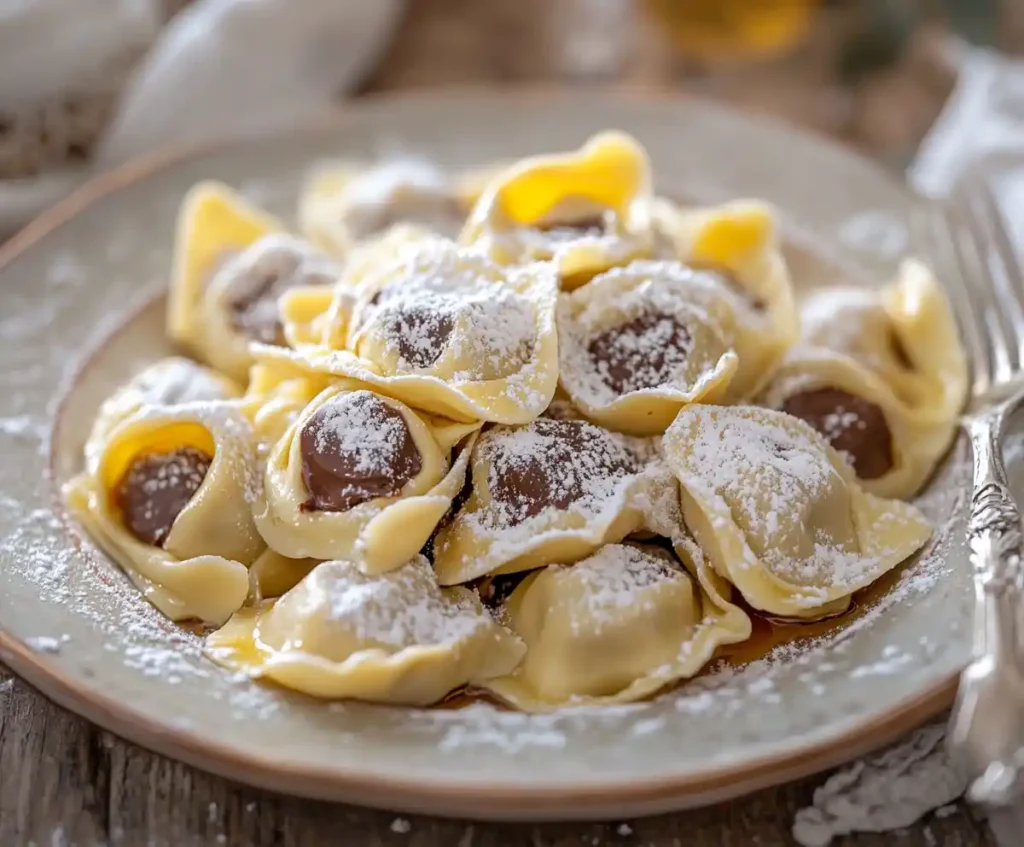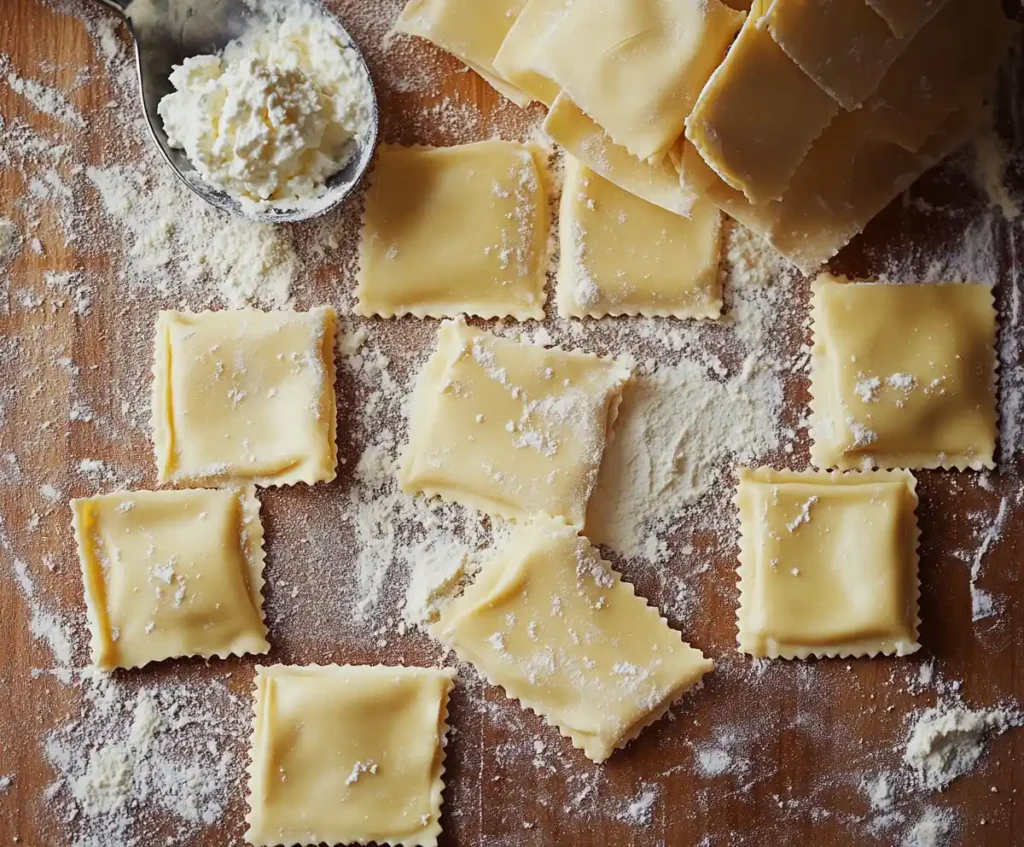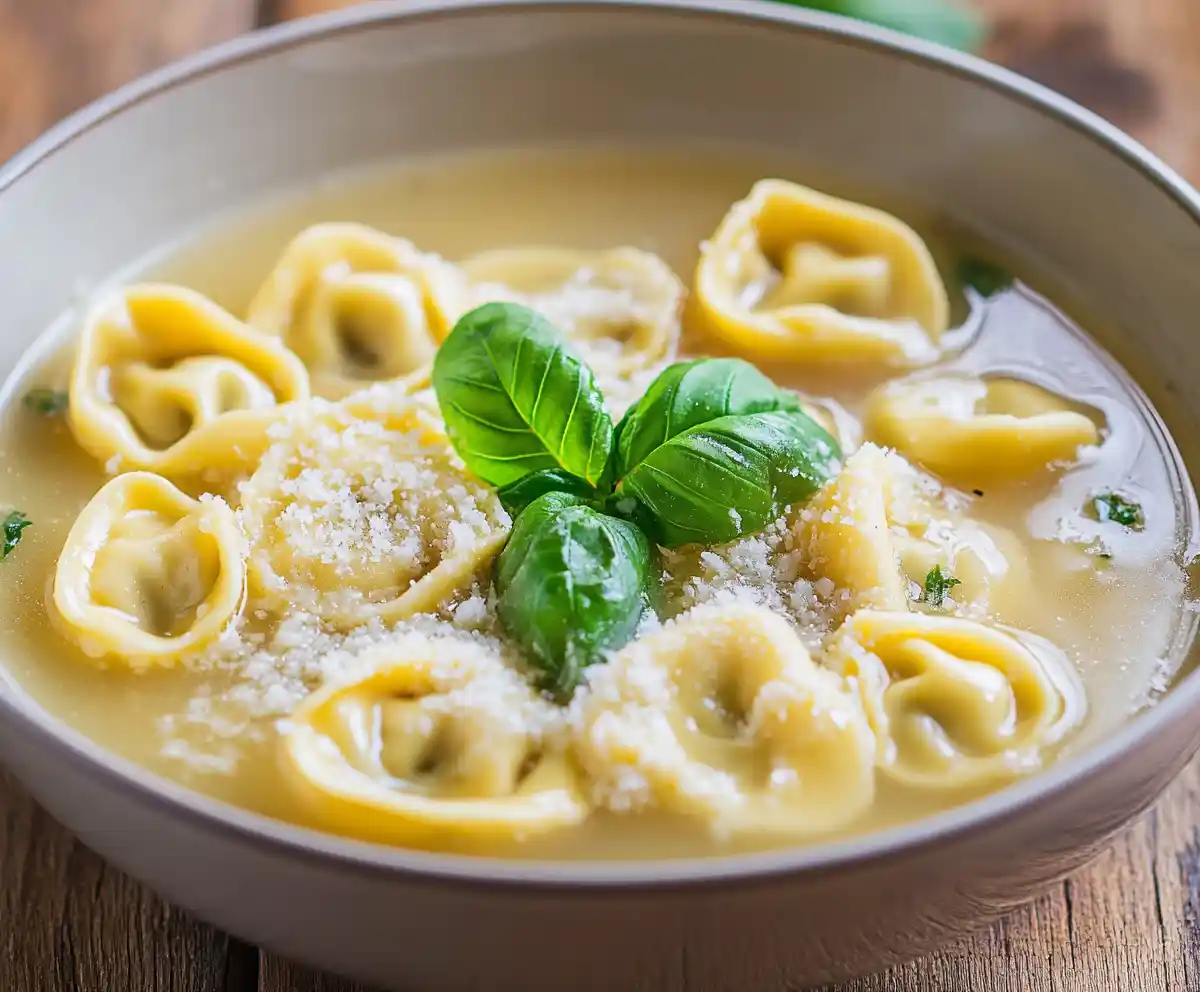
Introduction: Discovering What is Inside a Tortellini
When it comes to Italian cuisine, tortellini holds a special place in the hearts of food lovers worldwide. These tiny, ring-shaped pastas, often referred to as the “belly buttons of Italy,” are packed with various ingredients that deliver a burst of flavor in every bite. From rich cheeses to savory meats and vibrant vegetables, the possibilities are endless. But what is inside a tortellini that makes it so iconic and versatile? In this article, we’ll explore traditional and modern fillings, the process of making tortellini, and the best ways to enjoy it. Let’s get rolling!
Understanding Tortellini
The Origin and Shape of Tortellini
Tortellini isn’t just pasta; it represents a rich cultural history. Italians designed its unique, ring-like shape to resemble a navel, earning it the nickname “ombelico di Venere,” or Venus’s bellybutton. This charming creation has played a central role in Italian cuisine for centuries, with its origins rooted in the Emilia-Romagna region.
You roll out the dough, made from simple ingredients like flour and eggs, until thin, then stuff it with a filling before folding it into its signature shape. The design isn’t just for aesthetics—it helps the tortellini cook evenly and hold its filling securely.
Tortellini’s Role in Italian Cuisine
Tortellini is celebrated across Italy, with each region adding its own spin. While Emilia-Romagna sticks to classic fillings like pork, prosciutto, and Parmesan, other areas incorporate local ingredients. Regardless of the filling, tortellini is often served in broths, creamy sauces, or hearty ragù.
Interestingly, traditionalists believe that serving tortellini in broth is the only “correct” way. Yet, modern recipes have expanded its Flexibility, making it a star in pasta salads and baked dishes. Whatever the preparation, tortellini remains a symbol of comfort and culinary artistry.
Traditional Tortellini Fillings
Cheese-Based Fillings
The heart of traditional tortellini lies in its cheesy goodness. Usually, what is inside a tortellini combines ricotta, Parmesan, and sometimes mozzarella, creating a creamy, rich texture. Ricotta forms a mild base, while Parmesan brings a tangy depth, making this filling both flavorful and comforting.
To elevate the taste, Italians frequently mix in nutmeg and pepper, which give the cheese filling a warm, aromatic hint. This simple yet elegant combination has made cheese-stuffed tortellini a classic choice for pasta lovers around the world.
Meat-Filled Tortellini
For a heartier option, meat-stuffed tortellini is a staple in Italian cuisine. Traditional recipes from the Emilia-Romagna region often include pork, prosciutto, and mortadella. These cured meats are finely ground and mixed with Parmesan, creating a robust and savory filling.
The addition of herbs like parsley and spices such as black pepper enhances the filling’s complexity. When paired with a rich broth or sauce, meat-filled tortellini Change into a dish that’s both luxurious and satisfying.
Vegetable and Vegan Options
For those seeking a lighter filling, vegetable tortellini offers a fresh twist. Common fillings include spinach, mushrooms, and artichokes, which are blended with cheese or vegan substitutes for a creamy texture. Vegans can opt for tofu ricotta or cashew cream to replicate the richness of traditional fillings while staying plant-based.
These options are perfect for showcasing seasonal produce, offering a burst of earthy flavors with every bite.
Modern Takes on Tortellini Fillings
Fusion-Inspired Fillings
As Italian cuisine meets global flavors, what is inside a tortellini has expanded far beyond its traditional roots. Fusion-inspired fillings include ingredients like curried lentils, spiced sweet potatoes, or goat cheese with herbs. These creative combinations bring a unique twist to the classic pasta dish.
One standout is truffle-infused ricotta, which adds an earthy, gourmet element to the filling. Matches tortellini with ingredients like balsamic glaze or roasted garlic sauce complements these modern fillings beautifully.
Dessert Tortellini
Whoever said tortellini must always be savory? In fact, sweet tortellini is becoming increasingly popular, featuring fillings such as mascarpone, chocolate, or fruit preserves. These dessert variations are often dusted with powdered sugar or drizzled with honey, transforming the pasta into a delightful treat.

How is Tortellini Made?
The Dough Preparation Process
Making tortellini from scratch begins with crafting the dough, a crucial step in achieving the perfect texture and elasticity. Traditional tortellini dough is a simple blend of flour and eggs, mixed until it forms a smooth, pliable consistency. The dough should rest for about 30 minutes, allowing the gluten to relax, which makes it easier to roll out.
For added flair, some cooks incorporate natural colors into the dough using ingredients like spinach puree for green, tomato paste for red, or squid ink for black. These colorful Types not only enhance the presentation but also provide subtle flavor nuances.

Filling and Shaping the Tortellini
Filling tortellini is truly where the artistry shines. After rolling the dough into thin sheets, you carefully cut it into small squares or circles. Next, you place a small dollop of filling—whether cheese, meat, or a vegetable blend—at the center of each piece. Ultimately, the filling choice depends on what is inside your tortellini, tailored to your taste preferences.
To explore additional tips for stuffing and sealing tortellini, check out our Tortellini Stuffed Recipes and Tips.
Cooking and Serving Tortellini
Classic Cooking Methods
Cooking tortellini is a Light process that ensures the pasta remains tender yet firm. Start by bringing a large pot of salted water to a gentle boil. Fresh tortellini cooks in about 2–4 minutes, while frozen varieties take slightly longer.
It’s important to stir occasionally to prevent the tortellini from sticking together or to the bottom of the pot. Once they float to the surface, they’re ready to be removed using a slotted spoon. To retain their shape and prevent overcooking, avoid leaving them in the water for too long.
Popular Serving Styles
How you serve tortellini can completely Change the dish. The most traditional presentation is tortellini in broth, a comforting and flavorful meal that highlights the pasta’s Light filling. For a richer option, serve tortellini with a cream sauce or a hearty ragu, both of which complement cheese and meat fillings beautifully.
For a more modern approach, toss tortellini with a light olive oil and herb dressing or serve it chilled in a pasta salad. These styles allow the filling to shine without overpowering the dish.
If you’re looking for more creative serving ideas, consider Matches tortellini with unique sauces or sides. For inspiration, visit our Tortellini Pairing Guide.
Frequently Asked Questions About Tortellini
What are the most common fillings for tortellini?
If you’ve ever wondered what is inside a tortellini, tradition and taste provide a variety of answers. Chefs often use classic cheese blends, such as ricotta and Parmesan, to create a creamy and rich texture. In many regions, cooks prefer meat-based fillings like prosciutto, mortadella, or pork, which deliver a savory depth of flavor. These fillings pair beautifully with broth or sauces to enhance the dish’s overall appeal.
Can tortellini be made vegan or gluten-free?
Yes, it’s possible to enjoy tortellini even with dietary restrictions. Vegan versions use cashew cheese or tofu ricotta for the filling, while gluten-free dough relies on flours like rice or almond flour. These adaptations maintain the deliciousness of traditional tortellini while catering to specific needs.
What is the difference between tortellini and ravioli?
Both are stuffed pastas, but tortellini forms a ring or navel-like shape, while ravioli takes on a flat and square appearance. Chefs Usually fill ravioli with simpler ingredients, whereas tortellini combines more Richer mixes of meat and cheese.
How should fresh tortellini be stored?
Fresh tortellini should be stored in an airtight container in the refrigerator and used within 2–3 days. For longer storage, freezing is an excellent option to preserve its quality.
Why Tortellini is a Culinary Icon
A Blend of Tradition and Innovation
Tortellini stands out as a true symbol of Italian culinary Skill. Its balance of Light pasta and flavorful filling Highlights the skill and creativity that go into making each piece. Whether you prefer traditional meat fillings or modern vegan options, tortellini’s Flexibility makes it a global favorite.
The Flexibility of what is inside a tortellini allows it to shine in various dishes, from comforting soups to gourmet pasta salads. This Flexibility ensures its continued popularity across cultures and generations.
Why You Should Try Making Tortellini at Home
While store-bought tortellini offers convenience, making it from scratch delivers a truly rewarding experience. Preparing the dough, creating the filling, and shaping each piece allow you to embrace the artistry of Italian cuisine. Additionally, homemade tortellini lets you customize the ingredients to your liking, giving you the freedom to experiment with unique flavors.
If you’re new to pasta-making, don’t worry! With practice, shaping tortellini becomes easier, and the satisfaction of enjoying your creation is well worth the effort.
These sections delve into common questions and highlight why tortellini remains a beloved pasta worldwide. Let me know if you’d like further refinements or additional insights!
Matches Tortellini with the Perfect Sauces and Sides
Classic Sauce Matches
When considering what is inside a tortellini, it’s equally important to think about the sauces that complement those fillings. Traditional meat-filled tortellini shines when paired with a rich ragù or marinara sauce, enhancing its savory flavors. Cheese-stuffed tortellini, on the other hand, pairs beautifully with creamy options like Alfredo sauce or a light butter and sage glaze.
For a lighter option, consider a simple drizzle of olive oil with garlic and fresh herbs. This approach keeps the focus on the filling while adding just enough flavor to elevate the dish.
Side Dishes to Complete the Meal
To complete your tortellini meal, on the other hand, opt for sides that balance its rich flavors. For example, a crisp Caesar salad or an arugula salad with lemon vinaigrette provides a refreshing contrast. Alternatively, if you prefer a warm option, roasted vegetables such as asparagus or zucchini make wonderful additions.
For instance, if you’re looking for a heartier meal, pair tortellini with garlic bread or focaccia, which are especially great for soaking up any leftover sauce. Moreover, these sides add both texture and flavor, ensuring your meal feels satisfying and complete.
Final Thoughts on What is Inside a Tortellini?
Celebrating the Flexibility of Tortellini
Tortellini is more than just pasta—it’s a culinary masterpiece that blends tradition with creativity. The variety of what is inside a tortellini allows it to cater to diverse tastes, whether you’re craving savory meats, rich cheeses, or fresh vegetables. Its Flexibility ensures there’s a version of tortellini for every occasion, from casual family dinners to elegant gatherings.
Bringing Tortellini to Your Table
Making tortellini at home is a rewarding experience that connects you to its Italian roots. Whether you choose to stick to traditional fillings or explore modern twists, crafting this pasta allows you to create something uniquely yours. Pair it with complementary sauces and sides, and you’ll have a dish that’s both comforting and impressive.
If making tortellini feels overwhelming, on the other hand, you can begin with store-bought options and explore various serving methods. Moreover, the beauty of this pasta is its flexibility to suit your tastes, therefore making it an essential addition to any kitchen.
These sections highlight how to pair and enjoy tortellini while celebrating its rich history and Flexibility. Let me know if you’d like further adjustments or additional insights!

